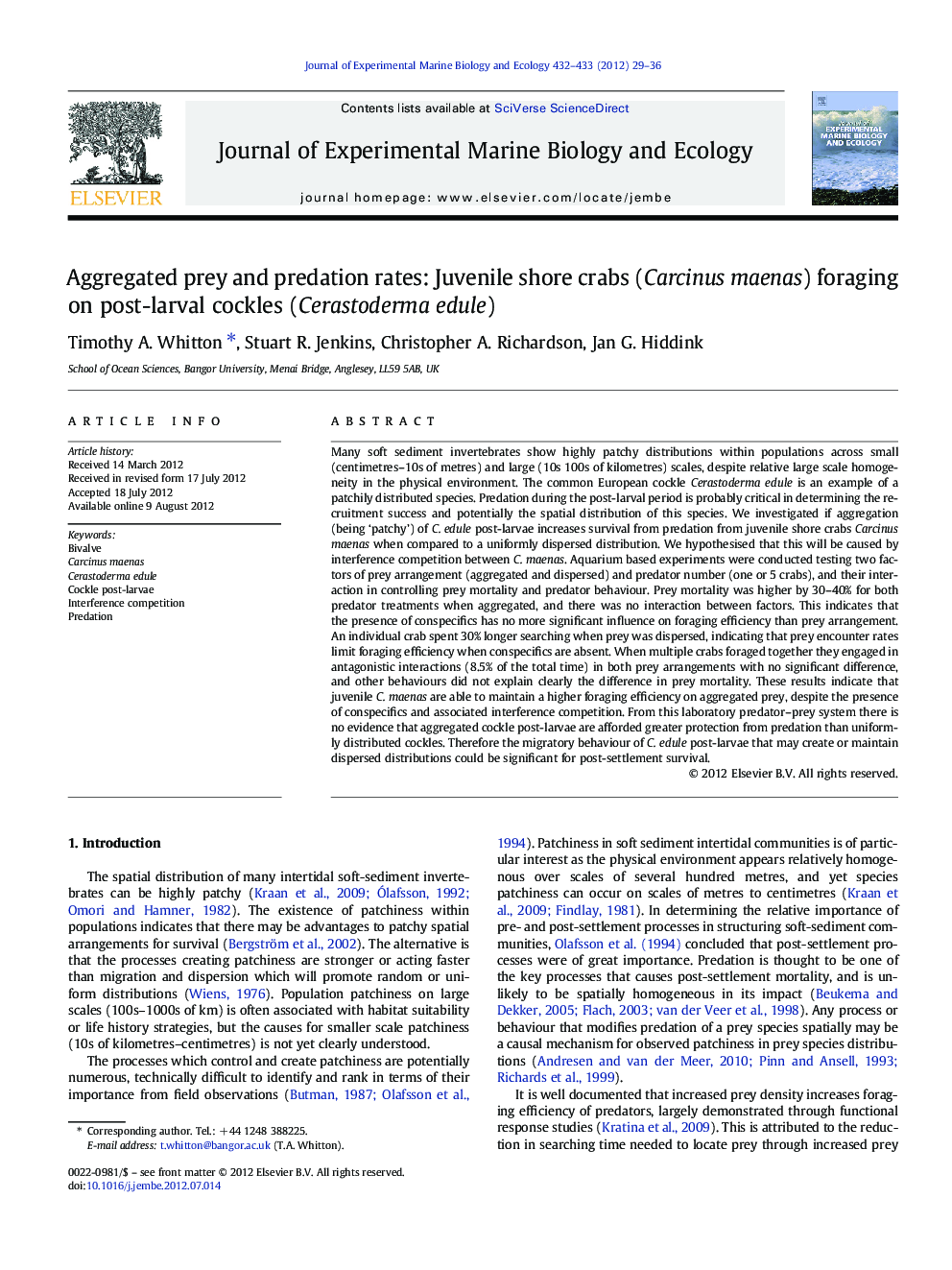| کد مقاله | کد نشریه | سال انتشار | مقاله انگلیسی | نسخه تمام متن |
|---|---|---|---|---|
| 4395902 | 1618440 | 2012 | 8 صفحه PDF | دانلود رایگان |

Many soft sediment invertebrates show highly patchy distributions within populations across small (centimetres–10s of metres) and large (10s 100s of kilometres) scales, despite relative large scale homogeneity in the physical environment. The common European cockle Cerastoderma edule is an example of a patchily distributed species. Predation during the post-larval period is probably critical in determining the recruitment success and potentially the spatial distribution of this species. We investigated if aggregation (being ‘patchy’) of C. edule post-larvae increases survival from predation from juvenile shore crabs Carcinus maenas when compared to a uniformly dispersed distribution. We hypothesised that this will be caused by interference competition between C. maenas. Aquarium based experiments were conducted testing two factors of prey arrangement (aggregated and dispersed) and predator number (one or 5 crabs), and their interaction in controlling prey mortality and predator behaviour. Prey mortality was higher by 30–40% for both predator treatments when aggregated, and there was no interaction between factors. This indicates that the presence of conspecifics has no more significant influence on foraging efficiency than prey arrangement. An individual crab spent 30% longer searching when prey was dispersed, indicating that prey encounter rates limit foraging efficiency when conspecifics are absent. When multiple crabs foraged together they engaged in antagonistic interactions (8.5% of the total time) in both prey arrangements with no significant difference, and other behaviours did not explain clearly the difference in prey mortality. These results indicate that juvenile C. maenas are able to maintain a higher foraging efficiency on aggregated prey, despite the presence of conspecifics and associated interference competition. From this laboratory predator–prey system there is no evidence that aggregated cockle post-larvae are afforded greater protection from predation than uniformly distributed cockles. Therefore the migratory behaviour of C. edule post-larvae that may create or maintain dispersed distributions could be significant for post-settlement survival.
► The effect of prey arrangement and predator interference competition was studied.
► Mortality of prey was highest when aggregated compared to uniformly dispersed.
► Interference competition between predators was similar for both prey arrangements.
► Dispersed prey had higher survival under single and multiple crab predation.
Journal: Journal of Experimental Marine Biology and Ecology - Volumes 432–433, 30 November 2012, Pages 29–36